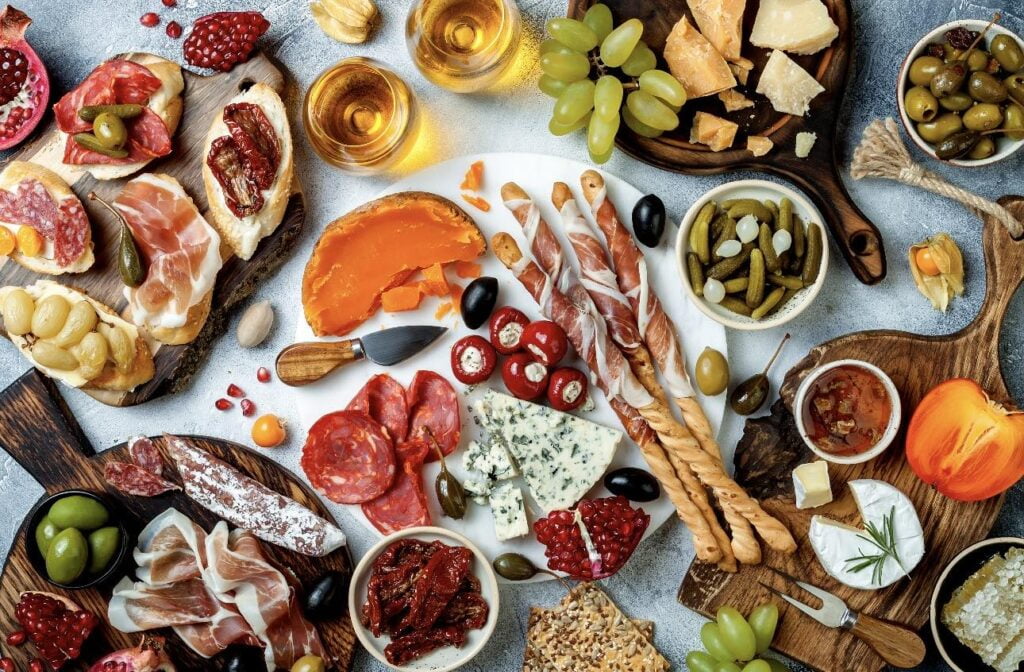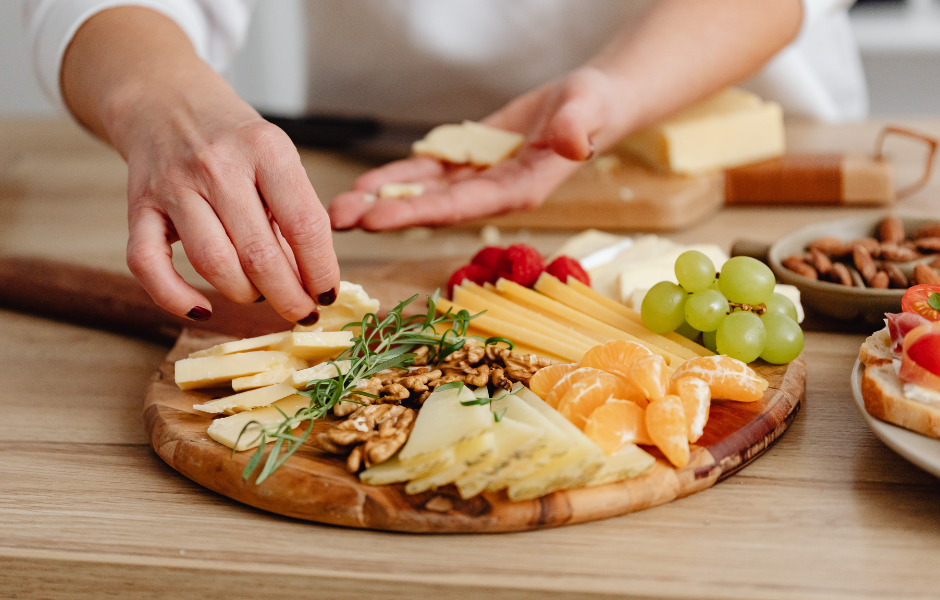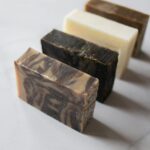
Join 130k subscribers and get the best of the week, straight to your inbox.
Designing the perfect charcuterie board is all about blending style, flavor, and creativity to suit any occasion. Start by gathering inspiration and planning the perfect selection of cheeses, meats, fruits, and accompaniments. Play with textures, colors, and seasonal ingredients to create an inviting and dynamic spread. Invest in quality ingredients that not only taste great but also enhance the presentation. Add personal touches and experiment with unique flavors to make your board stand out. Embrace your creativity, don’t hesitate to ask for advice when needed, and enjoy the process of how to make a charcuterie board that will impress and delight your guests.
If you’ve ever been in the middle of hosting and found yourself wondering, “What can I serve that will impress my guests without spending hours in the kitchen?”—you’re not alone. It’s easy to get stuck in the rut of serving the same old snacks, but it can feel like a challenge to create something visually stunning and delicious. That’s where the beauty of a charcuterie board comes in.
The problem is, many people don’t know where to start and how to make a charcuterie board that looks as good as it tastes. Whether you’re planning an intimate date night or hosting a big gathering, a well-curated charcuterie board is a game changer. It’s easy to put together, customizable, and a surefire way to elevate any occasion. In this blog,
I’m going to show you exactly how to make a charcuterie board that will have your guests asking for your secrets! From selecting the right ingredients to arranging them in a way that’s Instagram-worthy, I’ll guide you through the process step by step. Perfect for a cozy date night with your spouse or a fun gathering with friends, these boards can be as fancy or as simple as you like. And yes, they can be vegan too!
What Is a Charcuterie Board?
A charcuterie board (pronounced “shar-KOO-ter-ee”) is a beautifully arranged selection of cured meats, cheeses, fruits, nuts, and other delectable goodies served on a platter. Originating in France, the word “charcuterie” initially referred to the craft of preparing and presenting various types of cured meats. But over time, this culinary tradition has evolved into a popular and visually stunning food display suitable for any gathering.
When making a large charcuterie board, variety is key. Think about mixing textures and flavors — creamy cheeses alongside crunchy nuts, salty cured meats paired with sweet fruits, and artisan crackers for that satisfying crunch. The beauty of a custom charcuterie board lies in its versatility; you can tailor it to fit any occasion or dietary preference.
I personally enjoy putting together a handmade charcuterie board because it gives me a chance to be creative with flavors and presentation. Plus, making an easy at-home charcuterie board is much simpler than it looks. Start with your favorite cheeses and meats, then add fresh fruit, nuts, and spreads like honey or fig jam for a perfect balance of flavors.
For an extra special touch, a charcuterie board personalized with guests’ favorite snacks or unique garnishes always makes a lasting impression. Whether you’re hosting a family gathering or an elegant dinner party, this delicious assortment never fails to delight.
How to Make a Charcuterie Board – 5 Steps
Ready to impress your family and friends? Let’s get started!
Step 1: Choose Your Board
The first step in learning how to make a charcuterie board is choosing the right base. Whether you’re using a classic handmade charcuterie board, a sleek marble slab, or a large charcuterie board for a crowd, the size of your board should match the occasion.
A cozy date night might only need a small platter, while a party calls for a larger, show-stopping setup. If you’re aiming for something memorable, consider a custom charcuterie board or a charcuterie board personalized to the theme of your event.But if you’re hosting a crowd, a large charcuterie board is the way to go!
Step 2: Select Your Meats
When it comes to the meats, variety is essential. Traditional cured meats provide a great base:
- Prosciutto: Paper-thin slices with a salty, melt-in-your-mouth texture.
- Salami: Always a hit, with options ranging from mild to spicy.
- Chorizo: For those who enjoy a bold, smoky kick.
- Pâté: A sophisticated addition for elevating your board.
For a plant-based twist, you can use vegan deli slices, marinated tofu, or roasted vegetables as flavorful alternatives.
Step 3: Pick Your Cheeses
Cheese is often the highlight of any easy at-home charcuterie board. A great selection includes a mix of textures and flavors:
- Soft Cheese: Brie, Camembert, or creamy goat cheese add a rich and indulgent layer.
- Semi-Soft Cheese: Havarti, Gouda, or Fontina offer smooth, buttery flavors.
- Hard Cheese: Classics like Cheddar, Parmigiano-Reggiano, or Manchego bring sharpness and depth.
- Blue Cheese: Roquefort or Gorgonzola are bold choices for adventurous palates.
For vegan options, explore a range of plant-based cheeses with different textures, such as almond ricotta, cashew-based Brie, or smoked vegan cheddar.
Loved this reflection?
Join The Now Edit — my weekly letter for women reimagining how they live, work, and show up in the world.
Soulful storytelling. Gentle Strategy. Real Tranformation.
By signing up, you’re agreeing with our terms and conditions.
Step 4: Add Some Crunch
Next, I always make sure to add some crunchy elements to balance out the soft cheeses and meats. This step really enhances the overall texture of the board:
- Nuts: I often include almonds, walnuts, or cashews. These nuts not only provide a great crunch but also add a subtle richness.
- Crackers: I choose a variety of shapes and flavors to keep things interesting. Some easy at home charcuterie boards work well with simple crackers, but I like to add more flavors when possible.
- Bread: Sliced baguette or breadsticks are a classic. They’re perfect for piling up cheeses and meats, and they give that satisfying crunch.
Step 5: Sweet and Savory Accompaniments
This is where I get a little creative. Adding a mix of sweet and savory items helps to round out the flavor profiles of your charcuterie board:
- Fruits: Grapes, berries, apple slices, or dried fruits provide a refreshing contrast to the rich cheeses.
- Vegetables: I sometimes add cherry tomatoes, cucumber slices, or olives for that savory touch.
- Jams and Honey: Fig jam, honey, or mustard are my go-to accompaniments for sweetness and a bit of tang.
Arranging Your Charcuterie Board
Now that you have all your ingredients, it’s time to arrange them in a way that’s both visually appealing and easy for guests to enjoy. Here’s how I do it like a pro:
Start with the Big Items
I always begin by placing my cheeses and bowls of jams or spreads on the board first. This helps anchor the arrangement and gives me a clear structure for the rest of the items. For a unique touch, I might opt for a custom charcuterie board to make sure the pieces fit perfectly together.
- Add the Meats
Next, I fold or roll the meats and place them around the cheeses. I make sure to spread them out in a way that’s inviting and easy to grab. It’s all about creating variety, whether I’m using classic deli meats or something a bit more special. For larger gatherings, a large charcuterie board really helps give everything ample space to shine. - Fill in with Crackers and Bread
I arrange crackers and bread slices next, being mindful to place them in a way that’s easy for guests to grab. I like to mix up the shapes and textures so there’s something for everyone, especially if you’re working with a handmade charcuterie board that has a unique shape. - Add Fruits and Vegetables
I scatter fruits and vegetables around the board for pops of color and freshness. Grapes, berries, or even cucumber slices can add some visual flair and balance out the richness of the cheeses and meats. - Finish with Nuts and Extras
Finally, I fill in any gaps with nuts, olives, or other small items. I make sure to spread out almonds, walnuts, or cashews evenly so every bite is a delightful mix of flavors and textures. The addition of these elements really completes the presentation.
Perfect for Date Nights and Gatherings
Charcuterie boards are incredibly versatile, making them perfect for a variety of occasions. Whether it’s a romantic evening or a lively social gathering, they always seem to impress. Here’s how I make the most of them:
At-Home Date Night
Parents, listen up! Imagine this: the kids are finally asleep, and it’s just you and your spouse. Light some candles, pour a glass of wine, and bring out your beautifully arranged charcuterie board. It’s intimate, romantic, and low-effort – just what you need for a relaxing evening. If you’re wondering how to make a charcuterie board that feels extra special, a custom charcuterie board can elevate the experience. It adds a personal touch and allows you to tailor the ingredients to your and your partner’s preferences. Sometimes we forget the importance of creating special moments, but this is your hint to plan something sweet this weekend!
Social Gatherings
Hosting a party? Charcuterie boards are a great way to impress your guests without spending hours in the kitchen. They offer something for everyone, from meat lovers to vegans, and they’re an excellent conversation starter. Plus, they look absolutely stunning in the center of your table. If you’re hosting a larger event, a large charcuterie board will give you ample space to create a beautiful and plentiful spread. Now you’ll know how to make a charcuterie board that leaves a lasting impression!

Customizing Your Charcuterie Board
One of the best things about charcuterie boards is how customizable they are. Here are a few ideas to make your board unique:
- Seasonal Themes: Use seasonal fruits and vegetables to keep your board fresh and relevant. For example, in the fall, include pears and figs for a cozy vibe.
- Regional Inspiration: Create a board inspired by different cuisines, such as Italian, Mediterranean, or Middle Eastern. If you love Italian flavors, try adding prosciutto, mozzarella, and olives.
- Personal Touch: Include your favorite snacks or homemade items for a personal touch. I sometimes add homemade jam or my favorite handmade charcuterie board creations.
Conclusion
Now that you know how to make a charcuterie board that’s both beautiful and delicious, you can confidently elevate any occasion. Whether you’re creating a custom charcuterie board for a cozy date night or a large charcuterie board for a lively gathering, the possibilities are endless.
With a little creativity and the right selection of ingredients, you’ll be able to craft a spread that’s not only visually stunning but also perfectly suited to your guests’ tastes. The best part? It’s incredibly easy to put together, and you’ll look like a pro in the process. So, next time you’re hosting, skip the stress and let the charm of a perfectly arranged charcuterie board steal the show!
Suggested Reads
Crunchy Shaved Brussels Sprouts Salad Recipe (With Walnuts, Cranberries & Dijon Mustard)
Embracing the Health Benefits of Your Favorite Teas
Is Healing Leaky Gut Easy? 5 Steps that Made Me Healthier Than Ever
What is the 3-3-3 rule for charcuterie boards?
The 3-3-3 rule is a simple way to create a balanced charcuterie board. It includes three types of cheese (soft, semi-soft, and hard), three types of meats (salami, prosciutto, and smoked sausage), and three accompaniments (crackers, fruits, and nuts). This approach ensures variety, texture, and visual appeal.s.
What are 5 things to avoid on a charcuterie board?
To create a well-balanced charcuterie board, avoid overcrowding, as it can make the presentation messy. Steer clear of strong-smelling cheeses that may overpower other flavors. Avoid soggy or highly perishable items, as they can spoil quickly. Non-edible garnishes should be replaced with safe, edible alternatives like fresh herbs. Lastly, prevent repetitive flavors by including a mix of sweet, savory, and tangy items for better variety.
What should be on a charcuterie board?
A great charcuterie board includes cheeses like Brie, cheddar, and blue cheese, along with meats such as salami, prosciutto, and chorizo. Accompaniments like crackers, sliced baguette, dried fruits, grapes, nuts, olives, and pickles add texture and variety. Condiments such as honey, mustard, or fruit preserves enhance flavors, while fresh herbs make for a visually appealing garnish. A well-planned board offers a mix of textures and tastes for a delightful experience.
Zakia Lott
More Like This:








